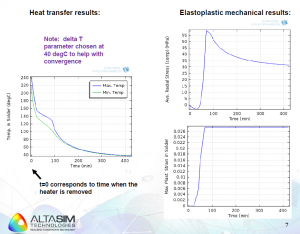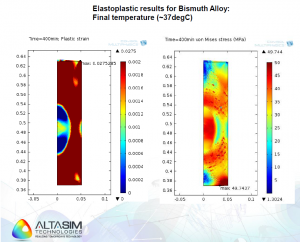Seal Well Solves Green House Gas Problem in Oil and Gas Wells
It is not very often that AltaSim gets to openly brag (with permission) about one of its clients, but this is one of those times. We are excited to share about the work of Homer L. Spencer, P. Eng, Seal Well Inc. in Calgary, Alberta, Canada. We encourage our readers to investigate the work of Seal Well for themselves by visiting their website at www.seal-well.com/.
Seal Well saw a problem. Many of the Plugging and Sealing tools and procedures for oil and gas wells were not reliable allowing for continued escape of geologically stored green house gases. Cement, while inexpensive and universally available for well completion and plugging purposes, is known to have certain inherent properties that make it less than ideal for sealing wells. A quick explanation of the problems associated with using cement can be found here.
Seal Well contacted AltaSim with the ideas and the determination to change the way wells are sealed. More than 430,000 oil and gas wells have been drilled in Alberta alone, and while natural gas leakage from a portion of these wells is not known with precision, it has been estimated at about 3.5 million tonnes per year CO2 equivalent. Seal Well saw an opportunity to stop this… permanently.
The Technology:
- The technology permanently seals greenhouse gas emitting wells reliably and economically.
- Uses bismuth-tin alloy because of the low melting point, volumetric expansion during solidification and high specific gravity
- A solid plug of bismuth-tin is lowered into the well, heated to melting and then allowed to cool so that it seals the well
- Heats the bismuth-tin until it melts and flows into the annular region of the well
- Has been tested on 7 wells showing 0 cubic meters per day leakage after deployment
The Application & Benefits:
- Eliminates leakage of greenhouse gases from abandoned wells by sealing surface casing vent flow
- Already eliminated 215 T/yr from the 7 plugged wells (estimated leakage of 3.5 million tons/year in Alberta)
- Estimated that 280,000 wells in Canada could need sealing in the future
- Current repair methods cost between $300,000 and $8,000,000 to repair. Final cost of the Seal Well method will be small fraction of this cost.
AltaSim developed a transient conjugate heat transfer analysis to simulate the in-situ heating and melting of the bismuth-tin plug. The analysis included the conduction through the solid domain and convection in the liquid domain. The heat transfer analysis was used to calculate the time necessary to fully melt the bismuth-tin plug. AltaSim also modeled the solidification process including the volumetric expansion to determine the residual stress in the plug. These analyses enabled Seal Well to virtually test conceptual designs rapidly without the need for extensive physical testing. In addition, the insight gained from these computational analyses directed design modifications that produced an improved product.
Dr. Jeff Crompton, Principal here at AltaSim Technologies will be presenting a Paper on this work at the COMSOL Conference in Boston in October. We invite you to explore this work and visit with Jeff before and/or after his talk.


